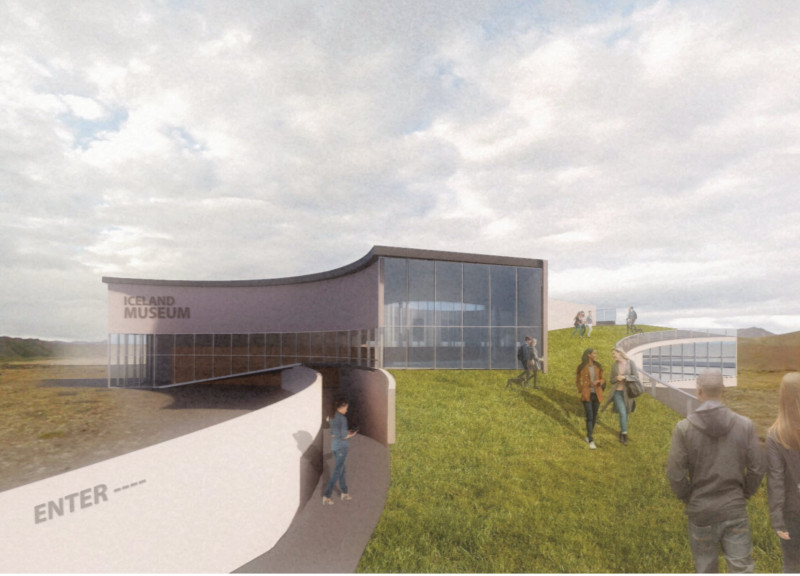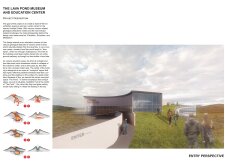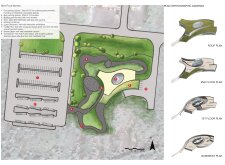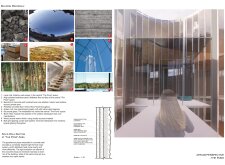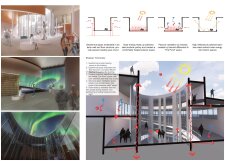5 key facts about this project
The building integrates several functional areas, including exhibition spaces, a centralized gathering area, educational facilities, and outdoor learning environments. Notably, the central feature known as "The Pond" not only acts as an atrium but also symbolizes a tranquil volcanic lake, enhancing the thematic connection between the structure and its natural setting.
Innovative Design Elements
One of the distinctive aspects of this project is the architectural inspiration drawn from lava formations. The design incorporates an underground pathway that emulates the experience of walking through natural lava tubes, creating an interactive educational journey for visitors. The flowing forms of the building reflect the dynamic movement of lava, visually linking the architecture to the geological characteristics of the area.
The use of materials further distinguishes this project. The exterior features local lava rock as cladding, which not only grounds the building in its environment but also ensures durability and low maintenance. High-polished stainless steel adds a contemporary touch, reflecting light and creating a dialogue with the surrounding landscape. Board-form concrete is utilized within, combining crushed lava rock for a tactile surface that echoes the geological theme.
Sustainability is paramount in the design approach, with geothermal heating systems and solar energy collection integrating energy efficiency into the building's operation. The green roof, planted with native species, minimizes ecological impact while providing additional educational opportunities about local flora.
Architectural Integration
The spatial organization both within and outside the structure emphasizes accessibility and flow. The layout accommodates a total of 105 car parking spaces, including options for accessibility, while a "Lava Discovery" trail connects the museum to the physical landscape, enhancing the visitor experience and engagement with nature.
The fluid interior spaces of the facility are designed to encourage interaction among visitors, with polished concrete flooring reflecting the project's overarching theme of water. This consideration reinforces the project's educational objectives by creating an environment conducive to learning and community participation.
This project represents a thoughtful exploration of architecture's ability to engage with and interpret geological themes through design, ultimately fostering a deeper understanding of the volcanic landscape of Iceland. For a comprehensive look at the design and functionality of the Lava Pond Museum and Education Center, explore the architectural plans, sections, and designs that provide further insights into this innovative project.


